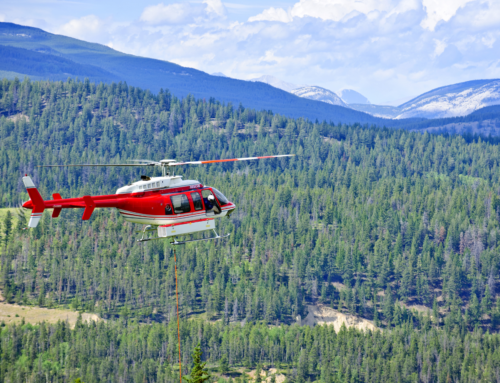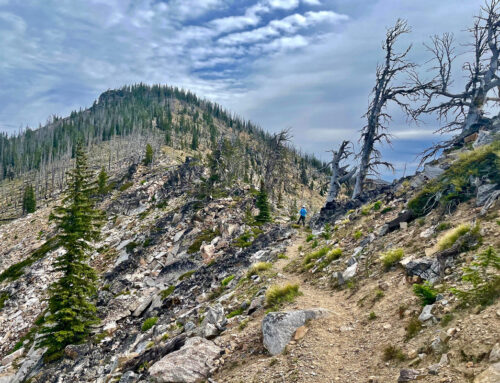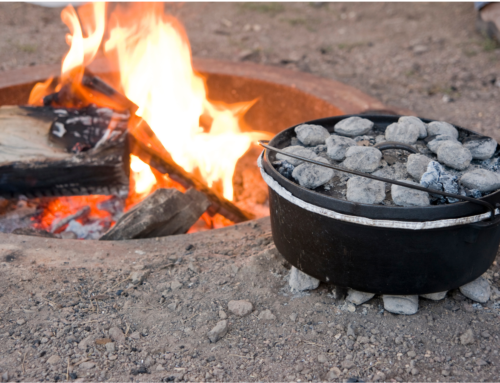
photo by Dave Beck
Part 3: The Work- By Melanie Vining, Executive Director. Click here to read Part 1 and Part 2.
ITA works with public land managers across Idaho, but most of the time our land manager partner is the Forest Service. We work on nine National Forests in Idaho and in one area managed by a National Forest in Oregon (Hells Canyon National Recreation Area). For the purpose of this blog, trail project specifications will be discussed in the context of Forest Service standards.
The Forest Service Trail Management Objectives (TMO’s) to govern how they prioritize and maintain each trail starts with Designated Use. This can be motorized (two or four-wheel), foot travel, stock use, etc. Uses are not mutually exclusive; hikers use motorized trails, stock use trails with a Designated Use of foot travel, etc. There are of course trails where certain uses are not allowed, such as mechanized travel in Wilderness areas, non-motorized trails outside Wilderness, trails that prohibit stock use, etc. But Designated Use is an important tool in determining how a trail will be designed and maintained.
Within Designated Use is Trail Class. This is a scale from 1-5, and based on what the Forest knows of use. A popular hiking trail close to, say, McCall, might have a Designated Use of foot travel and a Trail Class of 3, constructed with a wider tread and gentler grades. By comparison, a trail through Chamberlain Basin in the Frank Church-River of No Return Wilderness might be a Trail Class 1, with a narrower tread and some steeper pitches. This system gives Forest Service trail managers a place to start, a base from which to prioritize maintenance frequency and specifications.

In an ideal world, where each year brought plenty of funding, every Forest Service trail crew position filled, and lots of partner groups to help, each trail would be managed to the standard designated. But with over 10,000 miles of non-motorized trails in Idaho and Mother Nature throwing things like windstorms, wildfire, and avalanches into a human mix of varying funding and a worker pool that doesn’t always meet demand, be it summer Forest Service trail crew jobs or volunteer trail projects, maintenance cycles are missed and a “triage” approach may be called for on certain trails. The Designated Use for a backcountry trail may be foot and stock travel and call for clearing and cutting brush back to a 10-foot-wide corridor, tall enough for a horse and rider to pass, with drainage features adequate to shed runoff from the trail surface and a tread width of 18 inches. But if, because of Mother Nature and human factors, a trail hasn’t seen maintenance in ten years and in the interim been affected by wildfire and big wind events, the “triage” approach might be to cut logs and only the worst of the brush, and cleaning existing drainage features, making the trail passable for 20 miles versus perfect for 5. The hope would be to return again in a season or two and continue to work toward the ideal standard, but that isn’t always possible, and the first pass is a start that gets the trail passable again.
For crews on the ground, whether paid summer workers or volunteers through groups like ITA, this plan is made through discussions with the land manager before the project; we talk tradeoffs and priorities based on the Designated Use and Trail Class of each trail. Terms like “cut out the worst of the brush” are defined by criteria like brush growing out and over the trail from the upper side where it can push traffic off the edge, resulting in erosion of the outer portion of the tread (aka the fill slope) and at worst create a hazard as hikers or stock try to navigate the outer edge of a steep drop off. In a “triage” approach, existing drainage features might be cleaned of debris clogging them and preventing water from flowing off the trail surface, but no new features built in the interest of time. Logout is an exception: when a crew cuts a log from the trail, it must be cut wide enough that a pack animal with full packs can pass through, typically 10 feet, and ideally all logs are cut out during the hitch, leaving no “step-overs” behind. There have been some bad pack string wrecks because an animal’s pack got stuck on a narrowly cut log or worse, they were impaled on the sharp end of a dead tree that was not cut and drug from the trail corridor. Depending on the Designated Use and Trail Class, certain maintenance standards are more rigid than others, especially those related to safety.

Trail work is iterative, dynamic, a game involving often complicated logistics to get a crew, tools and gear to work, then get them back home again after a project. Ideally, every trail would be cleared to its designated standards every time. There are trails that get this treatment, and they are awesome. But there are other trails where “don’t let the perfect be the enemy of the good” philosophy must govern the work, at least for now. Transforming a trail from choked with logs and brush to log-free and brush that is a minor inconvenience, with drainage features cleaned out to let the trail live through another runoff season can be as rewarding as that A+ trail. It’s a matter of perspective and taking a long view, being eternally optimistic that someday more trails will be at their designated standard, but it’ll take time, patience, and flexibility.
Until then, happy trails- and be sure to sign up for a volunteer project this summer!






well said, melanie. FS trails exist in a very dynamic environment but often the little things a crew does during a trail hitch can make a difference in tread longevity and a safe travel corridor.